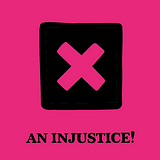The Bigoted History of My State the Textbooks and a Generation of Elders Kept Hidden
How convenient to it is to hide your own atrocities and make sure your children never learn of them

How convenient to it is to hide your own atrocities and make sure your children never learn of them
This is the story of Kamala Bhattacharya — a 16-year-old girl from the Indian state of Assam, who died protecting her mother tongue, Bengali. A story I was shielded from all through my life; her history and legacy hushed up and pushed behind a facade of perfection.
I was born in Guwahati, the largest city of Northeastern India, a land fed and watered by the mighty Brahmaputra river. I always prided myself in the history of my state: how my ancestors had cleverly thwarted all attempts by the Mughals to conquer the land, how Assam had remained fiercely independent when most of South East Asia was under the Mughal rule. About the brave martyrs who gave up their lives to thwart the British colonialists and how Assam had carved its own identity despite being cut off from the rest of mainland India for three years post-independence.
It is strange when my elders and the textbooks talked about Assam, they only talked about the people and places lying in the Brahmaputra valley.
But, Brahmaputra is not the only major river giving Assam its famed fertility. Barak is another glorious river that feeds the soils with rich alluvium that makes the population thrive. The Barak valley houses 11.7% of the state’s population, but the history of an entire region seems to have been wiped out from the collective memory of the people of the rest of Assam.
Maybe that’s why, when I got admitted to a college in Silchar — the biggest town in Barak valley — several of my relatives advised against going there, even though it was an institute of national repute. “Silchar is a Bengali place,” they told me. “The Assamese aren’t welcome there.”
Fortunately, my parents didn’t listen to such baseless rumours and sent me to study. When I landed in the Silchar Railway station in 2012, the first thing that caught my eye was a glittering statue made of brilliant bronze. The inscription on it said, “Dedicated to the 11 young lives who died a martyr’s death on this sacred piece of land to uphold the identity of their mother tongue.”

The second thing I noticed was that almost everyone spoke Sylheti — a dialect of Bengali. Yes, my relatives were partly right: Silchar was indeed a predominantly Bengali place. But, in the first few days and the subsequent years I’ve spent here, I never once came across an anti-Assamese sentiment in the predominantly Bengali-speaking Silchar.
Who were these Bhasha Shaheed (language martyrs), then? In all my study of the history of this region, why had I never come across this term?
Silencing people of a different language doesn’t just happen between countries or states. It can happen within a single state, but that doesn’t make it any less atrocious.
I finished college. I got a job, and I stayed in Silchar for nine years. I’ve developed a kinship with the local people here, a kind of camaraderie that’s taken me years to forge. The people here might speak a different language, but they are from the same state. They identify as belonging to Assam, a feeling of love stronger than all the bigotry I faced when I was advised not to come to this place.
Because of this camaraderie, I felt the need to know the history of the place. To learn the stories the people here grew up with and broaden my identity from just “Assamese” to “belonging to Assam.”
Assam is a land with a unique melting pot of cultures and tribes. According to the language census of 2011, 48% of the population speak the Assamese language, 29% speak Bengali, and the rest speak an assortment of tribal languages and dialects. The Assamese speaking population is concentrated in the Brahmaputra valley, while the Bengali speaking people reside mostly in the Barak valley.
In spite of this rich diversity, the government of Assam raised a proposal in April 1960 to declare Assamese as the one and only official language of the state. This threatened a loss of identity to the people of the Barak valley, who feared they might lose touch with their roots and be forced to study a language (Assamese) they’d never heard.
If the Creators themselves have made so much diversity, who are we to qualify these as “us” and “them” and start a war when we can have peace?
Following this, a peaceful protest broke out in all the districts of the Barak valley. The protesters crossed several villages, accumulating more support, and walked over 200 miles to congregate in Silchar. Their main demand was to include Bengali in the list of the state’s official languages. The protesters also called for due recognition of the languages of other linguistic minorities in the region.
When the government failed to accommodate their demands, the protesters gathered at the Silchar railway station on 19 May 1961. Emotions were running high and the protests got violent as one protester set fire to a truck. To control the situation, the paramilitary forces guarding the railway station fired 17 rounds into the crowd, leaving nine people dead.
16-year-old Kamala Bhattacharya was one of them. She was only a schoolgirl, who had wanted to ensure her juniors could continue to read and write in the language they grew up with.
After this violent incident, the Assam government was forced to withdraw the strict rule. Bengali was ultimately given official status in the three districts of Barak Valley. Section 5 of Assam Act XVIII, 1961, safeguards the use of Bengali in the Barak valley.
To commemorate this victory, the Indian government renamed the Silchar railway station as the Language Martyrs’ Station in 2019.
Despite the name of the station and the glorious bronze statue made to commemorate Kamala Bhattacharya and the other language martyrs, the memory of this display of bravery is fast fading from the people of Assam, especially those not directly affected by it.
The Bengali people living in Barak valley continue revering these martyrs to this day. But many of the Assamese people from the Brahmaputra valley are either unaware of this dark episode in history or have purposefully chosen to turn a blind eye to it.
The tension between the Assamese and Bengali have fizzled out, and the people have more or less learned to co-exist. But since both parties belong to Assam, should the language of our birth continue serving as such a major aspect of our identity?
Can’t we be people of Assam first and then Assamese and Bengali later?
The history of an entire region seems to have been wiped out from the collective memory of the people of the rest of Assam.
“The Assamese people are peace-loving.”
This is what my elders like to announce whenever some riot flares up in another part of the country. They like to take pride in the riot-free history of our state.
The irony here is that there is no separate word depicting the people of Assam. When we say Assamese, it might be misunderstood as those who only speak the language. But the people of Assam aren’t limited to the Assamese. There are people who speak Bengali, Hindi, and a plethora of tribal languages.
My identity as an Assamese isn’t the only identity I adhere to. I’m also a resident of Assam. The land is my home and I believe I should be aware of every drop of blood that has seeped into its soil to make it what it is today.
The others who speak my language might have knowingly or unknowingly tried to silence the ones that speak another, but here I am, throwing light on a forgotten history — one so bloody it isn’t mentioned even in history books.
Silencing people of a different language doesn’t just happen between countries or states. It can happen within a single state, but that doesn’t make it any less atrocious.
This post is my attempt at reconciling the inner conflict I’d faced with the multi-faceted identity I now carved for myself. It is also a plea to the reader that no matter what race, language or religion we identify with, our differences shouldn’t mean we are enemies. This world is vast enough to accommodate people of every belief. If the Creators themselves have made so much diversity, who are we to qualify these as “us” and “them” and start a war when we can have peace?
Want to get in touch? Join my email list.

